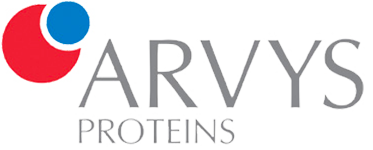ARVYS Proteins Inc. provides a full spectrum of protein biochemistry services – recombinant protein expression in bacterial, insect and mammalian cells, protein purification, refolding, assays and assay development, protein characterization, fermentation and endotoxin removal.
Outsource your protein biochemistry projects to ARVYS and enjoy superior results, team expertise and customer support after project completion.
Department of Bioengineering, University of Illinois at Chicago, Chicago, IL 60607, USA and 2Institut National de Recherche en Informatique et en Automatique, Paris 75012, France

Abstract
Geometric and topological properties of protein structures, including surface pockets, interior cavities and cross channels, are of fundamental importance for proteins to carry out their functions. Computed Atlas of Surface Topography of proteins (CASTp) is a web server that provides online services for locating, delineating and measuring these geometric and topological properties of protein structures. It has been widely used since its inception in 2003. In this article, we present the latest version of the web server, CASTp 3.0. CASTp 3.0 continues to provide reliable and comprehensive identifications and quantifications of protein topography. In addition, it now provides: (i) imprints of the negative volumes of pockets, cavities and channels, (ii) topographic features of biological assemblies in the Protein Data Bank, (iii) improved visualization of protein structures and pockets, and (iv) more intuitive structural and annotated information, including information of secondary structure, functional sites, variant sites and other annotations of protein residues. The CASTp 3.0 web server is freely accessible at http://sts.bioe.uic.edu/castp/.
Introduction
Protein structures are complex and are sculpted with numerous surface pockets, internal cavities and cross channels. These topographic features provide structural basis
and micro-environments for proteins to carry out their functions such as ligand binding, DNA interaction and enzymatic activity. Identification and quantification of these topographic features of proteins are therefore of fundamental
importance for understanding the structure–function relationship of proteins (1), in engineering proteins for desired
properties (2) and in developing therapeutics against protein targets (3).
THE CASTp SERVER
The CASTp server aims to provide comprehensive and detailed quantitative characterization of topographic features of proteins (14,15). Since its release 15 years ago, the CASTp server has ∼45 000 visits and fulfills ∼33 000 calculation requests annually. It has been proven to be a useful tool for a wide range of studies, including investigations of signaling receptors (1), discoveries of cancer therapeutics (16), understanding of mechanism of drug actions (17), studies of immune disorder diseases (18), analysis of protein–nanoparticle interactions (19), inference of protein functions (20) and development of high-throughput computational tools (21,22).
To provide additional useful information and to deliver improved user experience, we introduce here an updated server called CASTp 3.0. All important features of the previous versions of the server are retained, including detecting and characterizing cavities, pockets and channels of protein structures (Figure 1). In addition, we have substantially extended its functions by providing pre-computed topographic features of biological assemblies in the PDB database, as well as imprints of negative volumes of these
Read more, click here.
ARVYS Proteins Inc. provides a full spectrum of protein services to the life science, pharmaceutical and biotechnology communities. Our work experience encompasses almost every aspect of protein biochemistry allowing us to contribute to projects regardless of whether they are at early research or late development stages.




